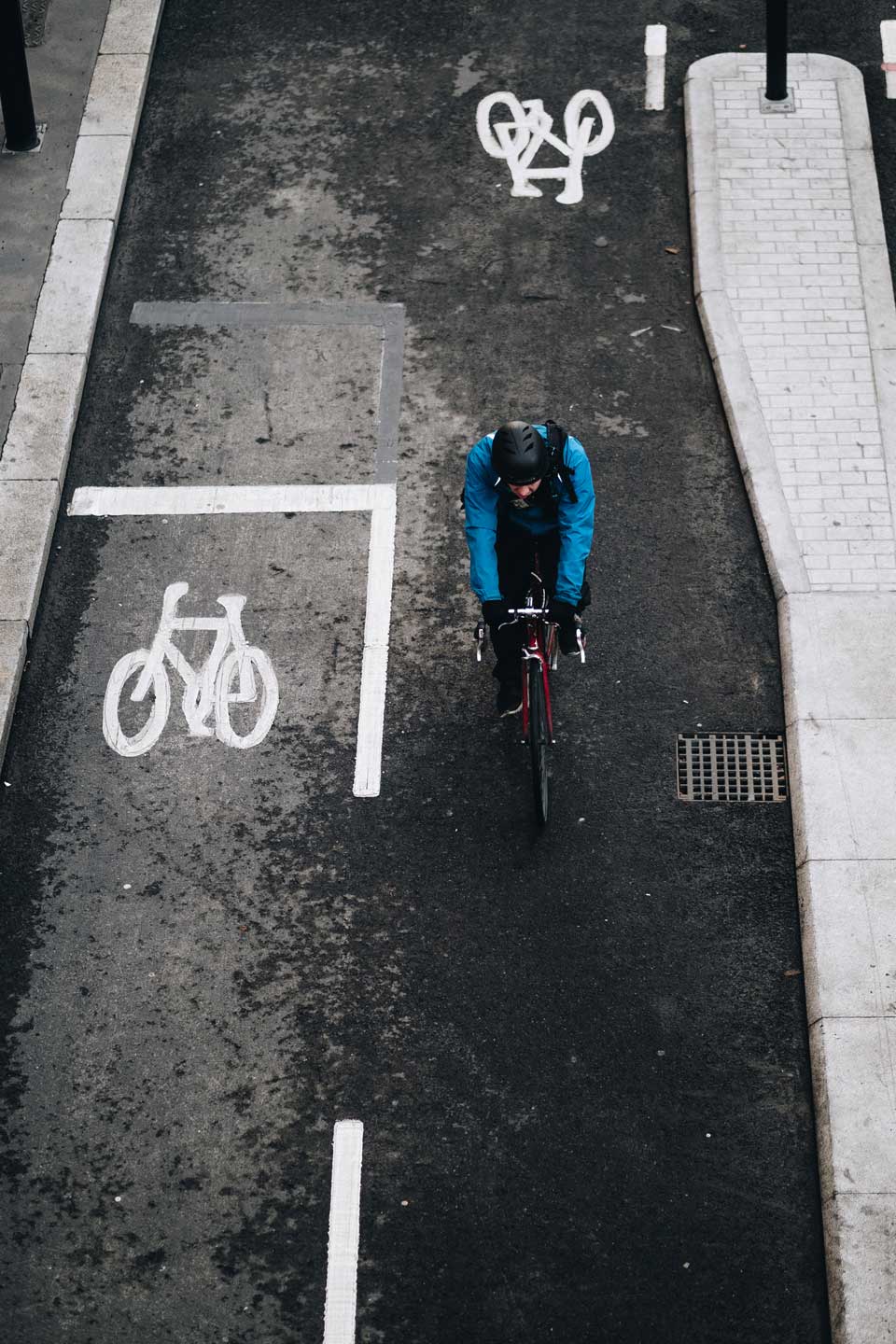
How does the law stack up in Colombia?
Last year saw a new law come in to help promote cycling in cities. Cyclists are generally fairly well-respected and treated in Colombia, but how is the cycling law in Colombia?
An unusual case hit the headlines last month in the UK: a pedestrian was killed in a collision with a bicycle. Complicating matters was the fact that the bicycle had no front braking system, a legal requirement in the country. This left the cyclist in an invidious position.
So how does the cycling law in Colombia stack up? Well, the original Ley 769 of 2002 was badly written and vague, but Senator Claudia López was instrumental in rewriting that law at the end of last year. The updated law is generally better for cyclists, although some serious problems remain. It’s far superior to UK law, in my opinion, and clearly recognises that different road users should be treated differently.
Most of the laws in existence are pretty straightforward, such as obeying red lights, signalling and so forth. If any of those come as a surprise to you, then you probably shouldn’t be riding a bike. Of course, it’s often safer to break those rules than obey them, given the absurd priority given to motorised transport and lack of infrastructure for more ethical road users. Just be aware that the police aren’t very good with morals or thinking, so they’ll come down on you like a ton of bricks. Some of the laws are worth explaining, though.
Related: Riding in the rain: You can call these rivers roads…
Bizarrely for many of you, helmets are a legal necessity here in Colombia. Well, they sort of are. The law says that all cyclists and motorcyclists should use appropriate helmets. Although folk hailing from down under will be used to this, most countries in the world don’t have helmets as a necessity. This is mainly because, to quote former Hour Record holder, scouser and cycling advocate Chris Boardman, helmet use is “not even in the top ten of things you need to do to keep cycling safe.” However, ignorance reigns supreme, and so it’s a law.
You can’t give someone a backie (f ’narr f ’narr) either. The law is clear that another rider must travel only with systems designed for such things, such as a child seat on the crossbar (top tube) or those little kiddie seats that go on the back. Lights are a necessity after dark, and should be white at the front, red at the back. All fairly standard, and as there’s no mention of it being a constant stream, it’s probably OK to use the blinking lights. They save battery and attract the attention of motorists better.
Filtering is specifically prohibited by law, as is undertaking. However, you’ve a very good chance of getting off this charge by pointing out how common it is. You’re not allowed to use lanes set aside for public transport though, so no jumping into the TransMi lanes. You are allowed to use the Séptima bus lane, however.
One of the biggest changes in the law means that cyclists can now use the whole lane. Previously, the law stated that cyclists were forced to stay within a metre of the kerb. Think about that for a moment, or pop outside and look at the road. It’s probably not particularly well maintained. Thankfully, the 2016 revision now states that not only are we not restricted to hugging the kerb like an eighties winger, but we can also travel in caravans. That’s right, you can ride two abreast, as you have the whole lane if necessary.
It’s not all good news, though. The law goes on to rightly allow bicycle users to share pedestrian space where necessary, as long as pedestrians always have right of way and the cyclist is respectful. But then comes the slap in the face. Wherever cycling infrastructure exists, cyclists are obligated to use it. This goes contrary to all good bicycle design thinking. Here in Bogotá, it’s utter madness.
As has been seen in the Netherlands, for example, if you build good cycling infrastructure, cyclists will use it without being forced to. There’s no reason to believe that bogotanos wouldn’t do the same. However, the flipside of this is that many cycle routes in Bogotá are poorly maintained, unfit for purpose or actively dangerous. This is the one rule that, if applied, could seriously damage cycling numbers in Bogotá.
All in all, it’s a mixed bag. The helmets and obligatory use of cycle lanes are downsides, but in general there’s an acknowledgment of cycling’s special conditions and the need to legislate differently. The caveat to all of this is huge: the laws aren’t always enforced.
More to the point, despite the whining of bitter car-drivers from their smog machines, cyclists aren’t the only ones breaking the rules. Find a traffic light where no car driver jumps the red, and I’ll give you a biscuit. Filtering is normally practised both by us and by our moto cousins. Best of all, it’s tolerated. There might be the odd shout to get on the cicloruta from a white van man, but for the most part Colombians are used to sharing the road.
I don’t use a helmet, I invade TransMi lanes for speed and I jump reds for fun. I’ve done all of this in front of cheery police who haven’t batted an eyelid yet, because they recognise that my actions are safe. With 3mm of lycra protecting my (spectacular) arse in an accident, I can afford to break the law, but I can’t afford to be unsafe. [He needs to protect that arse – Ed.]





